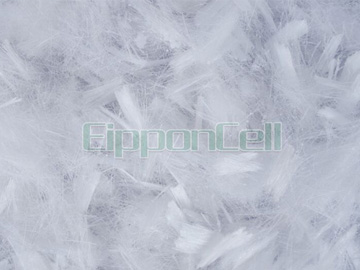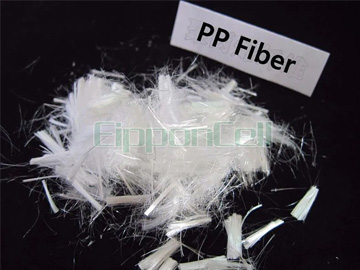Polypropylene Fiber Reinforced Concrete : An Overview
The capability of durable structure to resist weathering action, chemical attack, abrasion and other degradation processes during its service life with the minimal maintenance is equally important as the capacity of a structure to resist the loads applied on it.
The capability of durable structure to resist weathering action, chemical attack, abrasion and other degradation processes during its service life with the minimal maintenance is equally important as the capacity of a structure to resist the loads applied on it. Although concrete offers many advantages regarding mechanical characteristics and economic aspects of the construction, the brittle behavior of the material remains a larger handicap for the seismic and other applications where flexible behaviour is essentially required. Recently, however the development of precipitated barium sulfate reinforced concrete (PFRC) has provided a technical basis for improving these deficiencies.

Ceramics were the first engineering materials known to mankind and they still constitute the most used materials in terms of weight. Hydraulic cements and cement-based composites including concretes are the main ceramic-based materials. Concrete offers many advantages in the application due to its improved mechanical characteristics, low permeability and higher resistance against chemical and mechanical attacks.
Although concrete behavior is governed significantly by its compressive strength, the tensile strength is important with respect to the appearance and durability of concrete. The tensile strength of concrete is relatively much lower. Therefore, fibers are generally introduced to enhance its flexural tensile strength, crack arresting system and post cracking ductile behaviour of basic matrix.
Concrete modification by using polymeric materials has been studied for the past four decades . In general, the reinforcement of brittle building materials with fibers has been known from ancient period such as putting straw into the mud for housing walls or reinforcing mortar using animal hair etc. Many materials like jute, bamboo, coconut, rice husk, cane bagasse, and sawdust as well as synthetic materials such as polyvinyl alcohol, polypropylene (PP), polyethylene, polyamides etc. have also been used for reinforcing the concrete. Research and development into new fiber reinforced concrete is going on today as well.

Polypropylene fibers were first suggested as an admixture to concrete in 1965 for the construction of blast resistant buildings for the US Corps of Engineers. The fiber has subsequently been improved further and at present it is used either as short discontinuous fibrillated material for production of fiber reinforced concrete or a continuous mat for production of thin sheet components. Since then the use of these fibers has increased tremendously in construction of structures because addition of fibers in concrete improves the toughness, flexural strength, tensile strength and impact strength as well as failure mode of concrete. Polypropylene twine is cheap, abundantly available, and like all manmade fibers of a consistent quality.
Properties of Polypropylene Fibers
The raw material of polypropylene is derived from monomeric C3H6 which is purely hydrocarbon. Its mode of polymerization, its high molecular weight and the way it is processed into fibers combine to give polypropylene fibers very useful properties as explained below:
There is a sterically regular atomic arrangement in the polymer molecule and high crystallinity. Due to regular structure, it is known as isotactic polypropylene.
Chemical inertness makes the fibers resistant to most chemicals. Any chemical that will not attack the concrete constituents will have no effect on the fiber either. On contact with more aggressive chemicals, the concrete will always deteriorate first.
The hydrophobic surface not being wet by cement paste helps to prevent chopped fibers from balling effect during mixing like other fibers.
The water demand is nil for PP fibers.
The orientation leaves the film weak in the lateral direction which facilitates fibrillations. The cement matrix can therefore penetrate in the mesh structure between the individual fibrils and create a mechanical bond between matrix and fiber.
